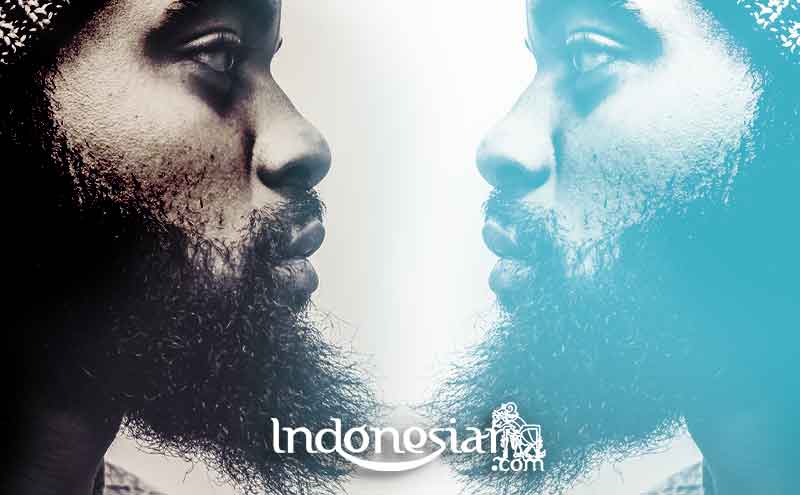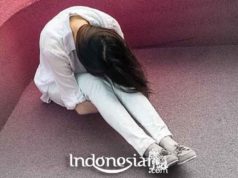Unlike other parts of the world, Islam spread in Southeast Asia without major conquest. Islam came by ship, eyeing spices and silk. The sword remained in the scabbard and there was almost no bloodshed.
Indonesia has been the largest Muslim country in the world for centuries. Experts are still hesitant to determine how Islam can actually dominate Indonesia. Looking back at the Islamic roots of a vast archipelago nation across the Indian and Pacific oceans is certainly important.
Historian Dr Carool Kersten, who explained how the teachings of the Prophet Muhammad spread in Southeast Asia, said that the spread was not by conquest and occurred gradually.
“The first evidence of local people converting to Islam in Indonesia today is no more than the 13th century. That’s when we found basic archaeological evidence, namely the sultan’s tombstone with an Arabic name, which shows that local leaders have embraced Islam,” Dr Kersten told TRT World.
Muslim armies began to come out of Arab lands in the 8th century when they controlled Spain in the 720s. The well-known young military commander, Muhammad Bin Qasim, had just invaded Sindh and Multan, what is now Pakistan.
“In Indonesia, Islam spreads peacefully. Unlike in the Middle East, North Africa and South Asia, where the spread of Islam is under control as a result of the Arab conquest,” said Dr Kersten, a man who now teaches at Kings College London, England. and write the history of Islam in Indonesia.
The 13th-century tombstone of a local ruler, Sultan Malik al Salih, found in Sumatra, is often cited as a historical marker when Islam began to enter the region. Salih, who controlled a kingdom on Indonesia’s northernmost island in Sumatra, had converted to Islam.
“The fact that he adopted an Arabic title and called himself a Sultan rather than a King, which is the Sanskrit word for a ruler, is the first solid evidence that someone from Southeast Asia decided to embrace Islam and its inhabitants followed him,” said Dr Kersten.
What really baffles historians and archaeologists alike are its tombstones, which are designed with motifs and patterns that can be found in the Indian state of Gujarat. Gujarat is known for its risk-taking merchants and businessmen who will not hesitate to travel to distant areas in search of a livelihood. Among them were many Muslims.
Trade routes have played an important role in the spread of Islam. For example, there is a large Hadramaut Arab community from Yemen in Indonesia. Muslims from China also left their mark. 15th century Chinese Muslim admiral Cheng Ho is often credited with helping spread Islam on the Indonesian island of Java.
“It’s tempting to assume that it was traders who brought Islam (to Indonesian territory). But you have to be careful here. Trade routes may be used as channels but traders are businessmen, they are not propagators of religion or da’wah,” said Dr Kersten.
An alternative theory suggests that people who belong to the Sufi may have traveled the same route and helped spread Islam in the region. Traditional Islam is closer to the Barelvi mysticism prevalent in Pakistan and India.
Indonesians and Malays enjoyed trading relations with Arabs and Persians even before the arrival of Islam. The answer to why Islam gained a foothold in Southeast Asia is relatively late, because it can be found in the economic region.
Surrounded by the sea, Indonesia, which consists of thousands of islands, does not have the best land for farming and its people rely heavily on sea trade. They felt threatened by the Hindu kingdoms of Burma, Cambodia and Thailand that prospered behind their vast river plains suitable for growing rice. “People in Indonesia no longer want to pay tribute to the mainland Hindu and Buddhist rulers. So they are looking for political allies in the Middle East and Africa,” said Dr Kersten.
A strict hierarchical structure of government, in which a ruler has the final say on important issues, may have helped accelerate the conversion of local populations without too much fighting, experts say.
“Unlike Mughals in most of India who appoint nizam, amir and maharaja to carry out orders for them, a king in Southeast Asia is a center of power and has significant influence,” said Nawab Osman, a Southeast Asia researcher based in Singapore, told TRT World.
Apart from taking on the role of religious leaders by the practice of building mosques next to their palaces, these new Muslim rulers also began to look towards the Ottomans for building alliances. After the conquest of Constantinople in the mid-15th century, Muslims controlled international maritime routes and many Indonesian kings saw it as a sign of prestige and an opportunity to become part of the network if they had converted to Islam.
Osman explained that because Islam has become the leading religion in parts of Southeast Asia, local imams will recite Friday prayers not only on behalf of the local king but also the Ottoman caliph.
In addition, wayang kulit also helps spread Islam in Indonesia, where 90 percent of the population is now Muslim. As in South Asia, people have traditionally used puppet theater and sculpture to tell heroic stories from Hindu scriptures such as the Ramayana.
“Wayang kulit performances are a big part of Indonesian culture. So what the scholars do is they change the character of the Ramayana to become Muslim figures (by showing the companions of the Prophet and so on). That’s a very effective way for people to convert to Islam, “explained Osman.
In Indonesian history, especially those written under Dutch colonial rule, which took place between the 1800s and mid 1900s, the use of such cultural symbols was given a different meaning.
“If you look at the orientalist writings from that period, it seems that Muslims do not practice Islam and still adhere to elements of Hindu beliefs. That is very untrue. Muslims will never do certain things like worshiping gods,” said Osman. .
Indonesian Muslims are not only passive recipients of Islamic teachings. They also actively participate in its achievements. Dr Kersten further explained that the spread of Islam in Indonesia is a hybrid process. There isn’t a single moment of takeover and it’s a much more fluid system where locals don’t give up all their practices and beliefs at once, “said Dr Kersten.
After Islam was founded, Indonesian Muslims traveled to Muslim learning centers around the world. The scholars are fluent in Arabic and Persian, very eager to seek Islamic knowledge. “Islam should not be seen as lacquered in South Asian culture. These people are an integral part of the Muslim world,” explained Dr Kersten.
In recent years, Indonesia’s religious groups have come under the spotlight amid concerns that hardliners are starting to dominate political discourse. The 2017 Jakarta gubernatorial election, in which a Christian of Chinese descent was defeated following a backlash from religious groups, is often cited as an example of growing intolerance.
Osman argues that it becomes a problem when this debate is framed on the question of whether ‘Islamists’ are on the rise. This is a narrative that according to him was triggered after strong action by Islamic groups in the 1999 national elections.
Indonesia’s second president, who ruled for more than 30 years between 1967 and 1998, imposed restrictions on Muslim political groups and tried to reduce the role of religion in state affairs. That doesn’t mean that groups like Nahdlatul Ulama (NU) and Muhammadiyah gained millions of followers only after Suharto was ousted.
Even in the previously openly contested 1955 general election, Islamic groups had won around 40-45 percent of the vote. These days even moderate groups, such as NU, feel threatened by what they see as the Arabization of Indonesia’s creeping religion known as ‘Islam Nusantara’.
“Muhammadiyah and Nahdlatul Ulama alike have argued that moderate Islam is under threat from the salafi type, Hizb ut-Tahrir, and the Muslim Brotherhood. But I think what has happened over the years is that there are divisions within the ranks of traditionalist Muslim groups. their own members are starting to take a tougher Islamic position, “Osman argued.
Source : trtworld

































